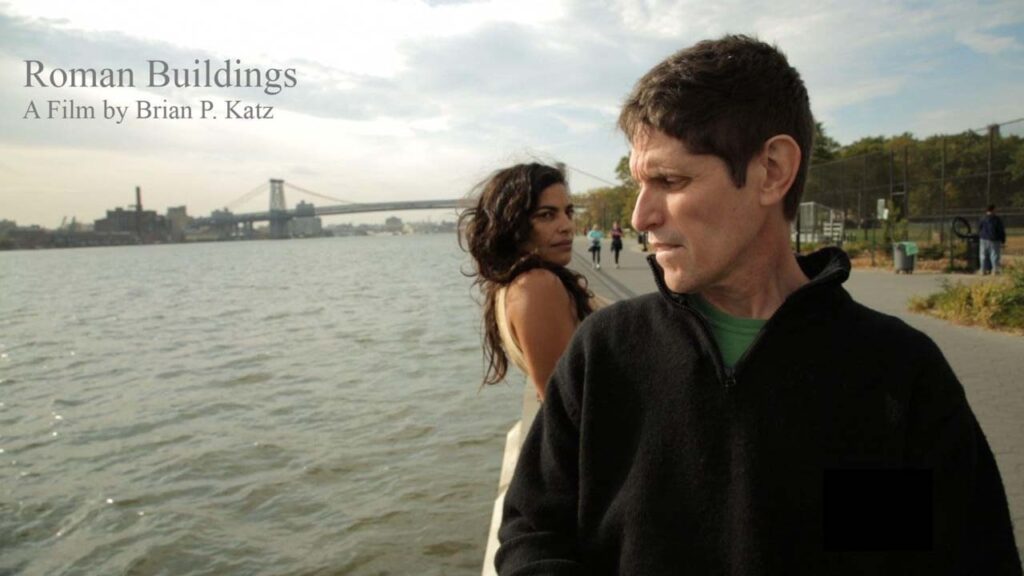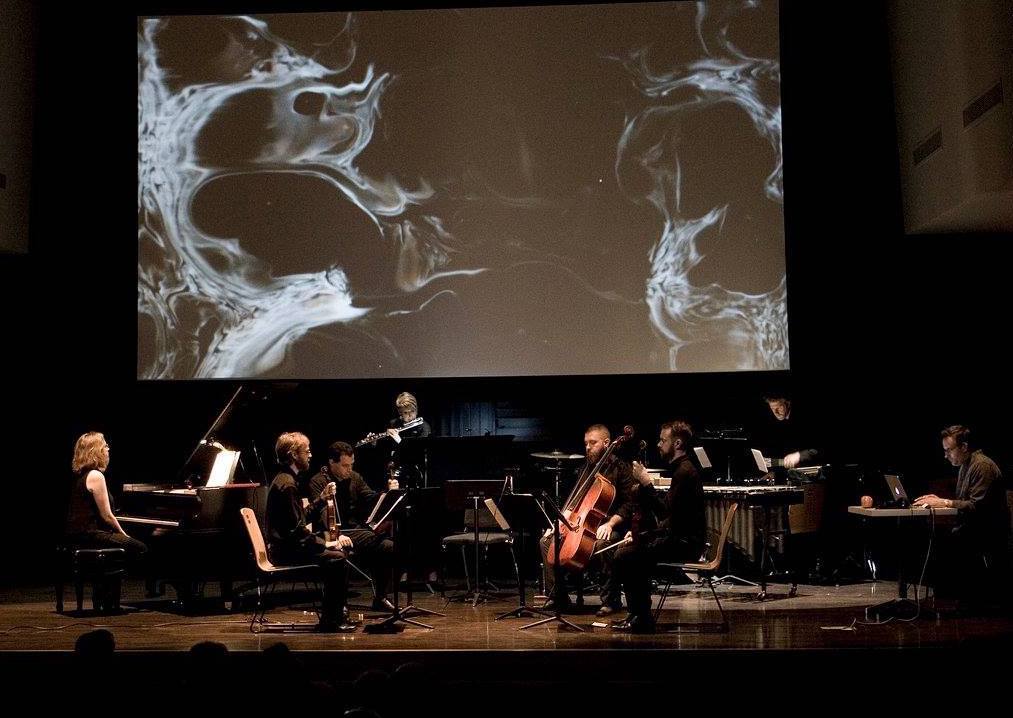Works
“Williams’s work is witty and light on its feet, curious and playful… a serious fun that’s all her own.”
—The New York Times
Photo by Rob Davidson
Large Ensemble
Performed live by Douglas Buchanan (organ) and the St. David’s Episcopal Church Choir
Brigid’s Flame was written in memory of my father-in-law, Robert W. Slammon, who died in 2004. As I was reading about all the saints for this commission, I became intrigued with Saint Brigid. She was named after the pagan goddess of fire, whose manifestations were song and poetry (“the flame of knowledge”). Saint Brigid is associated with many symbols, including sacred flames (eternal fire, candles, the hearth), high intelligence, poetic eloquence, the number 3, and childbirth. In the 5th century, Saint Brigid founded a convent in Clara, County Offaly (Ireland), where my father-in-law’s ancestors were from. Bob was also a fireman. All of these diverse influences came together in this piece, which flickers eternally. The sung texts are drawn from two traditional poems:
“Every day, every night
that I praise Saint Brigid,
I know I shall be safe:
I shall not be chased,
I shall not be caught,
I shall not be harmed.
Fire, Sun and Moon
cannot burn me.
Not lake, nor stream nor sea
can drown me.
I am safe, safe, safe,
singing her praise.”
—The Shield Of Brigid, Irish prayer
In Saint Brigid’s honour, Saint Ultan of Ardbraccan wrote a hymn commencing:
Christus in nostra insula
Que vocatur Hibernia
Ostensus est hominibus
Maximis mirabilibus
Que perfecit per felicem
Celestis vite virginem
Precellentem pro merito
Magno in mundi circulo.
Christ was made known to men
On our island of Hibernia
by the very great miracles
which he performed
through the happy virgin
of celestial life,
famous for her merits
through the whole world.
Commissioned by the Pittsburgh Symphony Orchestra
Excerpt performed live by the Pittsburgh Symphony Orchestra and Manfred Honeck (conductor)
Flood Lines was inspired by an important event in Pittsburgh’s history—the massive flood of 1936. As the snow melted and torrential rains began, the water level rose to more than 32 feet. Explosions and fires added to the perilous conditions. Dozens of Pittsburgh residents were killed and many more suffered from cold, disease and hunger. Similarly, the piece rises swiftly, ominously, and relentlessly. And then, once reaching its peak, it quickly subsides to a peaceful and strangely serene setting. Music one might hear in concert or on the radio in 1936 is reflected upon: Bartok’s Music for Strings, Percussion and Celeste, Varese’s Density 21.5 for solo flute, Ted Weems’ big band tune, You Can’t Pull the Wool Over My Eyes, and pianist/composer Mary Lou Williams’ Cloudy, which ends the piece in a surprisingly intimate way.
The basic material is riffs and grooves taken from the rhythm section of various James Brown funk tunes.
Commissioned by the North American New Music Festival and premiered by the Buffalo Philharmonic Orchestra, Jesse Levine (conductor) and Stephen Manes (piano soloist)
The title means “dark room” in Danish, reflecting the specific place I wrote the piece as a fellowship student in Denmark.
“… its gauzy, hollow, astringent string sonorities, with many difficult syncopations and cross rhythms, presented a consistent musical point of view. Williams knew exactly what she wanted and got it.”
—Buffalo News
Sala Luminosa for piano soloist and chamber orchestra uses a transcription of Astor Piazzolla’s tango, Movimiento Continuo, as a point of departure. The block-like, sectional structure is taken, with each section gradually condensed. Some of Piazzolla’s harmonic progressions, repeated rhythmic patterns, ornamental gestures, instrumental techniques, and melodic fragments are re-organized, transformed and combined with original material. The work is in a modified rondo form, with the “A” material (marked by fast, toccata-like materials in the piano) re-appearing in between sections of contrasting music. Sala Luminosa is an expansion of Williams’ solo piano work, Astoria.
“’Sala Luminosa’ for piano soloist and chamber orchestra is a beautiful paraphrase of a work by Argentine tango master Astor Piazzolla. Oppens played brilliantly, with hands displaying equal virtuosity.”
—Pittsburgh Post-Gazette
Commissioned by the Chicago Center for Contemporary Composition for the Grossman Ensemble
Performed live by Orpheus
The children’s game of telephone requires careful listening. The process of passing a simple phrase around a circle of individuals creates inevitable (and fascinating) transformations. Most often the listener tries to duplicate what they heard precisely, but sometimes there is an intentional (devious or hilarious) change. We played the game of telephone during the first Grossman Ensemble rehearsal in September 2021. The Ensemble’s unique format, with time given to elaborate on ideas through collaboration and conversation, was essential to the concept of the piece—and to its playful energy. There is certainly some subtext about the omnipresence of telephones in our lives. We switch quickly between text threads and sometimes mistakenly respond to the wrong person. We delete (superficial, informational, irrelevant) threads and we save other (complex, emotional, memorable) ones. We seek comfort, distraction, and connection from telephones. It is relentless, but also full of possibilities, as we find new ways to communicate and keep conversations going.
Excerpt performed live by the June In Buffalo Chamber Orchestra, Magnus Martensson (conductor)
Translated from the old French, meaning ice-glass, verre-glaz was inspired by nature photographs and the structural premise of starting with a climax.
Collaborations

Cineshape Series live at Eastman School of Music.
The Cineshape series is conceptually unique in the way it approaches the compositional process by establishing a creative relationship between film and music. The influence of the films is not programmatic (retelling the original plot), nor is it musicological (analyzing the film score, its style, the effect of its musical themes as accompaniment to the storyline and characters). Rather it is more of a structural approach, in which I translate particular camera techniques (close-up, fade out, zoom in, wide angle) or I model formal designs (montage, climax/denouement, divided screen) or I rework particular motifs. Indeed, the elements within the cinematic work that become the focus of the composition are often incidental to or exist in spite of the intentions of the filmmaker. These elements form the virtual material that is then actualized in a process of creative realization.

A portrait of the failed artist as a middle-aged man, “Roman Buildings” captures the inner life of the poet over the course of two years as he tries to capture Inspiration. “Roman Buildings” is also a visual document of the East Village, New York, a neighborhood that has lost its way because of extreme gentrification and corporate ownership.
Arrangements
Lukas Foss: Solo Observed
2000 | arranged for two pianos

